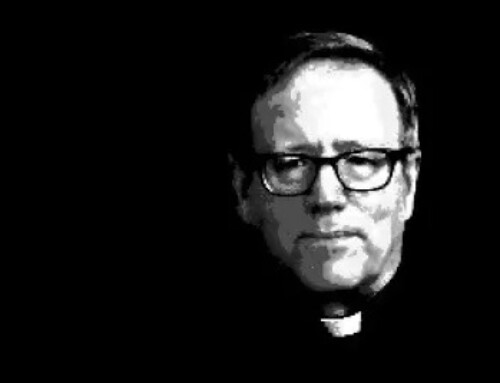According to a study in Sweden: “The risk of suicide was higher among same-sex married individuals as compared to different-sex married individuals…Among same-sex married men the suicide risk was nearly three-fold greater as compared to different-sex married. This holds true also after adjustment for HIV status. Even in a country with a comparatively tolerant climate regarding homosexuality such as Sweden, same-sex married individuals evidence a higher risk for suicide than other married individuals.”1.
To some, the results of this study may seem surprising: as the majority of researchers in the LGBT field singularly blame societal and cultural homophobia in order to explain the always higher rates of mental disorders in homosexuals. The CDC (Centers for Disease Control) stated: “Homosexuality is not a mental disorder, but homophobia, stigma, and discrimination have negative effects on the health of MSM [men who have sex with men], lesbians, and other sexual minorities.” Yet, this would not appear to be the case in ultra-progressive Sweden. Here, the Swedish government is very proud of its “accomplishments” in terms of LGBT liberties:
“…Sweden has taken important steps to ensure that LGBTQ people enjoy the same rights and opportunities as everyone else.
Most recently, gender-neutral wedding laws (2009), adoption rights for gay and lesbian couples (2003), insemination rights for lesbians (2005), and a prohibition of discrimination based on sexual orientation added to the Swedish constitution (2011) are some of the laws that have been passed.”
In addition, in 1944, Sweden legalized homosexual relations, one of the first to do so, and in 1972, Sweden became the first country in the world to legally allow gender change; most sweepingly – in 2003, the Swedish government amended their Constitution in order to outlaw hate speech based on sexual orientation. Not surprisingly, the International Lesbian, Gay, Bisexual, Trans and Intersex Association (ILGA), recognizes Sweden as Europe’s most gay-friendly country.
This report, as inconvenient as it is for “gay” apologists, confirms what Dutch researchers reported in their 2013 study:
“Despite the Netherlands’ reputation as a world leader with respect to gay rights, homosexual Dutch men have much higher rates of mood disorders, anxiety disorders and suicide attempts than heterosexual Dutch men.”2.
In addition, two previous representative studies of Dutch adults found that gay men were three times more likely than heterosexual men to report a mood disorder or anxiety disorder, and ten times more likely to report suicidal thoughts.3-4.
There is also another concurrent 2016 study from Sweden which found that: “Both suicidal ideation and attempts were more commonly reported by lesbian/gay and bisexual (LGB) individuals…Gay men evidenced higher risk as compared to heterosexual men. Recurrent medical care was more frequent in LGB individuals, especially in bisexual women and gay men.”5.
A recent cumulative study published in the “American Journal of Public Health” reached the following conclusion: “…sexual minorities had a higher lifetime prevalence of suicide attempts than heterosexual persons;” according to this same study: 20% of LBG respondents had attempted suicide as opposed to 4% of heterosexual respondents.6.
All of this is the direct result of the declassification of homosexuality as a mental illness, for instance – by the American Psychiatric Association in 1973, followed by the American Psychological Association in 1975; also by The National Board of Health and Welfare in Sweden in 1979, and by World Health Organization in 1990. Consequently, gay men and women, suffering with very real psychological problems, are conveniently led down a the rabbit hole of prescribed homophobia, even internalized-homophobia, by agenda-driven physicians and researchers, who are themselves homosexual; whereby researchers, especially early advocates, based much of their theology on their own individual experiences of coming-out: epitomized by Richard Isay, the father of modern “gay” affirmative psychology, in his book “Becoming Gay: The Journey To Self-Acceptance.” There you can find such vague references as: “But it is the affirming love of another man that is the most effective antidote to the ‘battered self-esteem’ of most gay men in society…Only then does being gay become indispensable to one’s happiness.”
The problem with this rational of “happiness” though the unencumbered articulation of gay “affirming love,” is that in countries where it has been freely and widely open to unfettered expression, “gay” men continue to be decidedly unhappy – even suicidal. While cultural and institutional homophobia may explain this phenomena of mental illness in such places as Iran, it certainly does not explain them in Sweden! That is so – because this is not a problem of mass imagined homophobia, but a problem of untreated mental illness. Consequently, “gay” men and women, undiagnosed and untreated by health care professionals, are left to self-treat themselves, just as others have done in the past by numbing the pain with alcohol or drugs, instead homosexuals find a certain amount of relief or resolution to their inner struggle within the world of sex and homosexual partnerships.
Now, if homophobia were the cause, it should be argued that younger generations of gay men would show improving rates of mental wellness as evidenced in the great strides made by progressive governments which have actively sought to improve the lives of homosexuals and to reduce (even criminalize) discrimination against them. Yet, this is not the case: according to a study from the UK: “Mental ill-health was common: 21.3% were depressed and 17.1% anxious, while 3.0% had experienced attempted suicide and 6.5% had self-harmed within the last 12 months. All four indicators were associated with younger age…”7. Here, it should be noted that in the International Lesbian, Gay, Bisexual, Trans and Intersex Association -Europe’s 2015 review of LGBTI rights, the UK received the highest score in Europe, with 86% progress toward “respect of human rights and full equality” for LGBT people and 92% in Scotland alone.
This situation is repeated in the United Sates; where: “Young gay, bisexual, and other men who have sex with men (YMSM) are at increased likelihood of experiencing depression and engaging in condomless sexual behaviors.”8. Therefore, years of so called progress towards full inclusion of homosexuals has not resulted in a sort of gay equilibrium whereby these disparities in mental illness should disappear; in fact, among gay youths, they have increased or remain the same. But, “gay” apologists would argue that there still persists homophobia everywhere; only, in Sweden, there are very few (if any) societal, cultural, or even religious barriers left – in 2009, the Lutheran-affiliated Church of Sweden, to which roughly three-quarters of all Swedes belong, allowed its clergy to officiate at same-sex marriage ceremonies. At least in Sweden, there is nowhere else for gays to go, in their efforts to find the proverbial scapegoat.
What modern psychology has failed to perceive, or to even admit, is that after each successive homophobic straw-man has been burned to the ground – there remains a restless and anxious uneasiness in the gay psyche; this ranges from a bitchy sort of peevish symbolized in the fussy preening of the drag queen to the self-destructive lifestyle of no-holes-barred sexuality that flourished in the pre-AIDS bathhouses and continues to breed HIV and various other diseases through the likes of Grindr.
The continuance of this needless suffering points to a general misunderstanding of the homosexual malaise, which is not attributable to any sort of homophobia, but to an internal struggle that goes back to a childhood need for approval, security, and love. During, my over a decade spent in the super-accepting city of San Francisco, I never saw any sort of homophobia outside of the environs of the Castro – not once; however, what I witnessed inside “gay” was a desperate need for male affirmation and simple recognition. I will never forget, how, inside almost every Castro Street bar were these quivering sorts of newcomers or terminally shy interlopers, so zealous for any sort of male acknowledgement, that they literally shoved themselves through the door and onto a lonely barstool; for a while, I was once one of them; later, I became narcotically soothed by the constant smell of male sweat and the momentary brush of razor stubble against my face – and, for a while, I felt as if I had found male companionship and love.
Only, those other sort of mopy guys at the bar, a little more experienced than I, had been through that initial flurry of pacification, and were still looking. As I reached “gay” middle age, my mid-to-late-20s, I befriended one of these men: he had been single, partnered, and even pseudo-married – only, now he was all alone again; for a while, he latched onto me, but he wasn’t my type. A few years, later I saw that same expanding desolation in my own life when I began to take greater risks in terms of unsafe-sex practices and my desire to find anything that appeared semi-lasting. Over the years, we remained friendly and we saw each other a few times – from him, I learned he had gone to a few psychologists there in San Francisco, who told him he still had unresolved issues of internalized homophobia. For about a year – we didn’t speak; I was too busy to look in on him and I wasn’t seeing him around; one day, someone told me he hung-himself.
1. “Suicide in married couples in Sweden: Is the risk greater in same-sex couples?”
Björkenstam C, et al.
Eur J Epidemiol. 2016 May 11.
2. “Exploring a Dutch paradox: an ethnographic investigation of gay men’s mental health”
Sanjay Aggarwala & Rene Gerrets
Culture, Health & Sexuality: An International Journal for Research, Intervention and Care
Volume 16, Issue 2, 2014
3. “Same-sex sexual behavior and psychiatric disorders: findings from the Netherlands Mental Health Survey and Incidence Study (NEMESIS).”
Sandfort TG, et al.
Arch Gen Psychiatry. 2001 Jan;58(1):85-91.
4. “Suicidality and sexual orientation: differences between men and women in a general population-based sample from the Netherlands.”
de Graaf R, et al.
Arch Sex Behav. 2006 Jun;35(3):253-62.
5. Self-reported suicide ideation and attempts, and medical care for intentional self-harm in lesbians, gays and bisexuals in Sweden.
Björkenstam C, et al.
J Epidemiol Community Health. 2016 Mar 4.
6. “Lifetime Prevalence of Suicide Attempts Among Sexual Minority Adults by Study Sampling Strategies: A Systematic Review and Meta-Analysis.”
Hottes TS, et al.
Am J Public Health. 2016 May.
7. “Mental health inequalities among gay and bisexual men in England, Scotland and Wales: a large community-based cross-sectional survey”
Ford Hickson, et al.
J Public Health. April 26, 2016
8. “Depression, Compulsive Sexual Behavior, and Sexual Risk-Taking Among Urban Young Gay and Bisexual Men: The P18 Cohort Study.”
Storholm ED, et al.
Arch Sex Behav. 2015 Aug 27.






The problem with this rational of “happiness”
“rational” should be “rationale”, no?
Thank you for these studies. I recently read a comment by a diplomat from Holland on how good things are going for the redefined marriages.